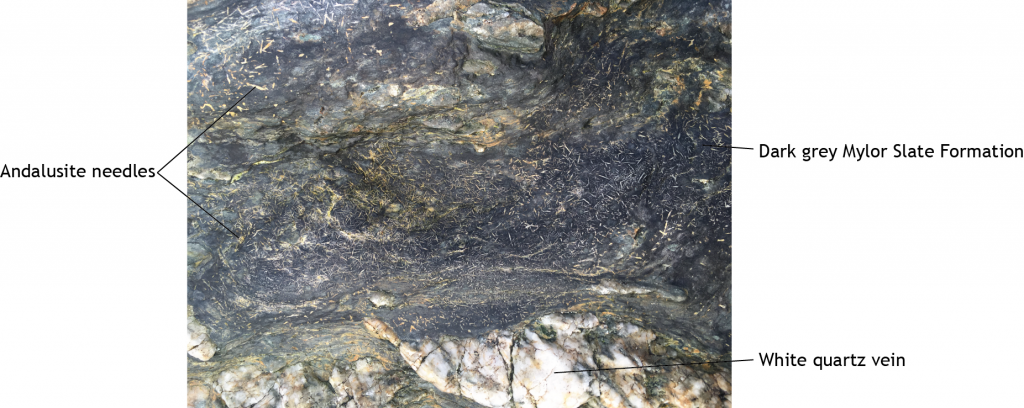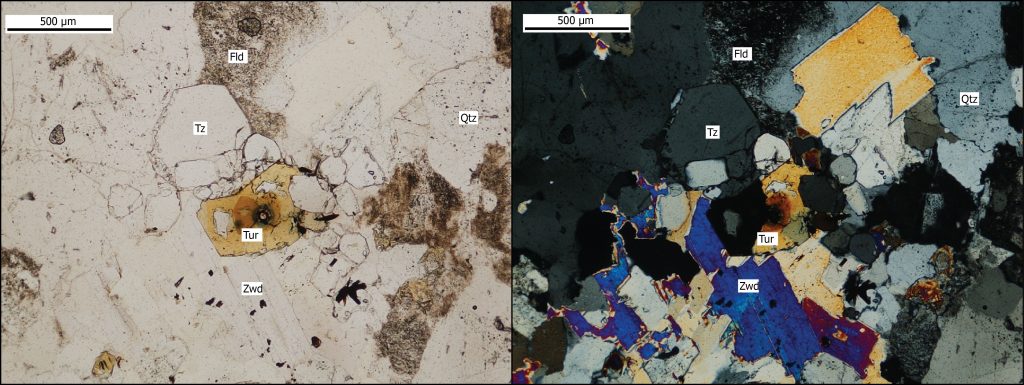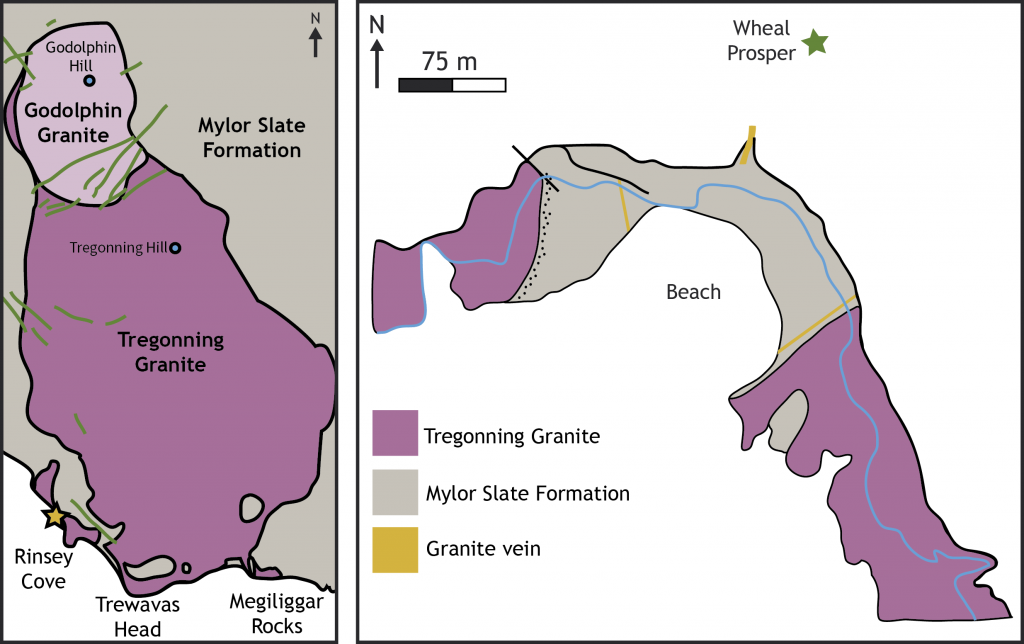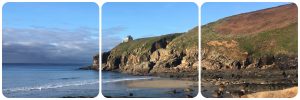
Highlights: Granite, metamorphic minerals, granite veins, engine house
Location: SW 5930 2691
What’s nearby: Loe Bar, Praa Sands, Megiliggar Rocks
Conservation: UNESCO Mining World Heritage, Site of Specific Scientific Interest (SSSI). No hammering or collecting at any time.
Information here is provided for reference only. You should ensure that you have permission from the landowner and take safety precautions when visiting sites. Always check tidal timetables before visiting coastal sites and remain aware of cliff falls.
The roof of the Tregonning Granite and contact with the surrounding Mylor Slate Formation is exposed at Rinsey Cove, along with granite sheets and pegmatite. The slates have been metamorphosed to spotted hornfels. Wheal Prosper engine house sits on top of the cliff.
Further Reading & References
- Bromley A. 1989. Field Guide. The Cornubian Orefield. Sixth International Symposium on Water-Rock interaction (Malvern, UK). International Association of Geochemistry and Cosmochemistry.
- Simons B, Shail RK and Andersen JCO. 2016. The Petrogenesis of the Early Permian Variscan granites of the Cornubian Batholith – lower plate post-collisional peraluminous magmatism in the Rhenohercynian Zone of SW England. Lithos, 260 (1). pp. 76-94. [Link – £]
- Stone M. 1975. Structure and petrology of the Tregonning-Godolphin Granite, Cornwall. Proceedings of the Geologists Association, 86 (2). pp. 155-170. [Link – £]
